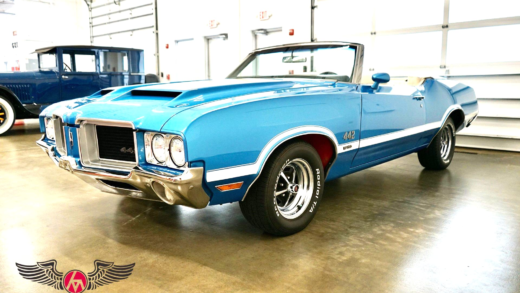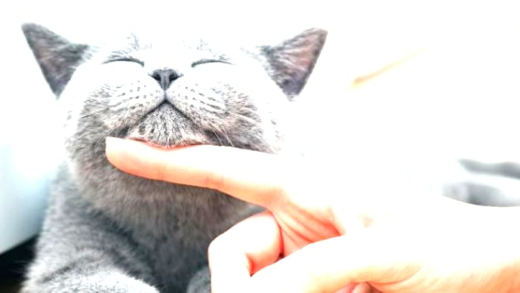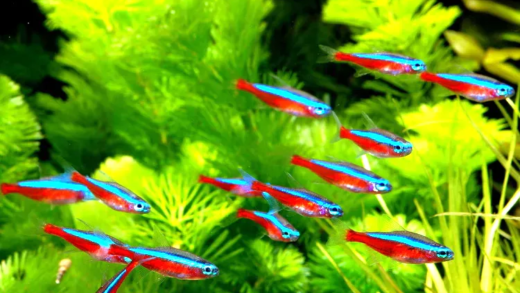Ankylosaurus was an armored dinosaur known for its unique features like bony plates and a club-like tail. It moved slowly but effectively grazed on low plants. Its armor provided protection against predators, while its herbivorous diet allowed it to thrive. Ankylosaurus played a significant role in its ecosystem, influencing vegetation and serving as prey for larger dinosaurs. Lesser-known facts include its small brain and keen sense of smell. In size, it was comparable to a small car, weighing 5-8 tons, making it one of the heaviest armored dinosaurs.
Ankylosaurus Appearance: What Did It Look Like?
Ankylosaurus is one of the most recognizable dinosaurs, thanks to its distinctive armored body. This dinosaur was covered in thick, bony plates known as osteoderms, which provided excellent protection against predators. The appearance of Ankylosaurus is often described as a living tank, showcasing a broad, low body that could reach up to 30 feet in length.
One of the most notable features of Ankylosaurus was its club-like tail, which could be swung with significant force. This tail was not just for show; it served as a formidable weapon against attackers. The skull was also heavily armored, with a flat shape and a wide snout, making it ideal for grazing.
In terms of coloration, while the exact hues are unknown, it is believed that Ankylosaurus likely had a camouflage pattern to blend into its surroundings, aiding in its survival. Overall, the physical characteristics of Ankylosaurus reflect its adaptations to a life spent in a world filled with larger, more aggressive dinosaurs.
Ankylosaurus Movement: How Did It Move and What Was Its Speed?
Ankylosaurus was not known for its speed. With its heavy armor and stocky build, this dinosaur moved at a slow pace. Estimates suggest that Ankylosaurus could reach speeds of about 5 miles per hour when necessary, which was sufficient for a creature of its size. Its legs were stout and positioned directly beneath its body, providing stability rather than speed.
Despite its bulk, Ankylosaurus was capable of moving efficiently through its environment. The dinosaur’s low center of gravity allowed it to navigate rocky terrains and dense vegetation. Its movement was likely characterized by a lumbering gait, as it foraged for low-lying plants.
In terms of locomotion, Ankylosaurus relied on its sturdy legs to support its weight. The dinosaur’s body was built for defense rather than quick escapes, making it well-suited for a life of grazing and foraging, rather than fleeing from danger.
Survival Features of Ankylosaurus: What Helped It Survive?
Ankylosaurus possessed several survival features that allowed it to thrive in a prehistoric world filled with predators. Firstly, its armor made it nearly impervious to attacks from many carnivorous dinosaurs. The bony plates provided a tough exterior that deterred most would-be attackers.
Additionally, the club-like tail served as an effective weapon, allowing Ankylosaurus to defend itself. When threatened, it could swing its tail with great force, potentially breaking bones or causing serious injury to predators like Tyrannosaurus rex.
Another critical survival feature was its herbivorous diet. By primarily feeding on low-lying plants, Ankylosaurus could find sustenance in various environments. This adaptability in diet helped it survive during periods of environmental change.
Diet of Ankylosaurus: What Did It Eat?
Ankylosaurus was a herbivore, primarily feeding on a diet of low-lying plants, ferns, and shrubs. Its teeth were flat and designed for grinding, making it well-suited for processing tough plant material. The structure of its skull allowed for a wide jaw, enabling Ankylosaurus to consume a large quantity of vegetation.
This dinosaur likely spent much of its day foraging for food. Its low body position made it easy to reach ground-level plants, maximizing its feeding efficiency. The ability to digest tough plant matter was crucial for its survival, particularly in environments where food sources could be scarce.
In summary, Ankylosaurus’s diet consisted of various herbaceous plants, which provided the necessary nutrients for this robust dinosaur. Its specialized teeth and jaw structure were perfectly adapted for its herbivorous lifestyle, supporting its survival in a competitive ecosystem.
Defense Mechanisms of Ankylosaurus: How Did It Protect Itself?
Ankylosaurus was equipped with remarkable defense mechanisms that made it a formidable survivor in the age of dinosaurs. Its most striking feature is its armor—thick, bony plates called osteoderms covered its body, making it nearly impervious to many predators. These plates were not just for show; they formed a protective barrier that could withstand bites and scratches from attackers.
In addition to its tough armor, Ankylosaurus wielded a powerful weapon: its club-like tail. This tail could swing with tremendous force, capable of delivering devastating blows to any predator that dared to attack. Imagine a sledgehammer in action—Ankylosaurus could break bones and deter even the mightiest of foes, like the Tyrannosaurus rex.
Furthermore, Ankylosaurus had a low profile, which helped it avoid detection by larger predators. By blending into its surroundings, it could graze on low-lying vegetation while remaining hidden. Its combination of armor, tail weaponry, and stealth made Ankylosaurus one of the best-equipped dinosaurs for defense in its ecosystem.
Ecosystem Role of Ankylosaurus: What Was Its Place in the Food Chain?
Ankylosaurus played a crucial role in its ecosystem as a herbivore. By primarily feeding on low-lying plants, ferns, and shrubs, it helped maintain the balance of vegetation in its habitat. This grazing activity not only provided sustenance for Ankylosaurus but also contributed to the overall health of the ecosystem.
As a large herbivore, Ankylosaurus was a vital part of the food chain. It served as prey for larger carnivorous dinosaurs while simultaneously controlling plant growth. Its ability to consume vast amounts of vegetation meant that it influenced the types of plants that thrived in its environment.
Moreover, the presence of Ankylosaurus in the ecosystem likely created opportunities for other species. Smaller animals could benefit from the disturbances caused by its grazing, as these actions would expose hidden food sources. Thus, Ankylosaurus was not just a participant in its ecosystem; it actively shaped it.
Interesting Facts About Ankylosaurus: What’s Not Commonly Known?
Ankylosaurus is often associated with its impressive armor and tail, but there are several lesser-known facts that highlight its uniqueness. For example, Ankylosaurus had a relatively small brain compared to its body size, leading to the belief that it relied more on instinct than intelligence for survival.
Another intriguing fact is that Ankylosaurus likely had a keen sense of smell, which would have been beneficial for foraging. Its nostrils were positioned high on its snout, allowing it to sniff out food while keeping its head low to the ground.
Interestingly, Ankylosaurus is sometimes referred to as a “living tank” due to its heavily armored body. This nickname reflects its evolutionary adaptations, which enabled it to thrive alongside more aggressive predators. The unique features of Ankylosaurus, such as its armor and tail, make it a fascinating subject of study for paleontologists.
Ankylosaurus Size Comparison: How Does It Stack Up Against Other Dinosaurs?
Ankylosaurus was a massive dinosaur, reaching lengths of up to 30 feet. To put this in perspective, it was comparable in size to a small car! Its robust body was built to withstand the rigors of its environment, standing out among its contemporaries.
When compared to other dinosaurs, Ankylosaurus was larger than many herbivores like the Stegosaurus but smaller than the giant sauropods such as Brachiosaurus. This size allowed Ankylosaurus to effectively defend itself while still being agile enough to forage for food.
In terms of weight, Ankylosaurus could weigh anywhere from 5 to 8 tons, making it one of the heaviest armored dinosaurs. This significant mass, combined with its protective features, made Ankylosaurus a striking figure in the prehistoric landscape.
Ecosystem Role of Ankylosaurus: What Was Its Place in the Food Chain?
Ankylosaurus played a crucial role in its ecosystem as a herbivore. By primarily feeding on low-lying plants, ferns, and shrubs, it helped maintain the balance of vegetation in its habitat. This grazing activity not only provided sustenance for Ankylosaurus but also contributed to the overall health of the ecosystem.
As a large herbivore, Ankylosaurus was a vital part of the food chain. It served as prey for larger carnivorous dinosaurs while simultaneously controlling plant growth. Its ability to consume vast amounts of vegetation meant that it influenced the types of plants that thrived in its environment.
Moreover, the presence of Ankylosaurus in the ecosystem likely created opportunities for other species. Smaller animals could benefit from the disturbances caused by its grazing, as these actions would expose hidden food sources. Thus, Ankylosaurus was not just a participant in its ecosystem; it actively shaped it.
Interesting Facts About Ankylosaurus: What’s Not Commonly Known?
Ankylosaurus is often associated with its impressive armor and tail, but there are several lesser-known facts that highlight its uniqueness. For example, Ankylosaurus had a relatively small brain compared to its body size, leading to the belief that it relied more on instinct than intelligence for survival.
Another intriguing fact is that Ankylosaurus likely had a keen sense of smell, which would have been beneficial for foraging. Its nostrils were positioned high on its snout, allowing it to sniff out food while keeping its head low to the ground.
Interestingly, Ankylosaurus is sometimes referred to as a “living tank” due to its heavily armored body. This nickname reflects its evolutionary adaptations, which enabled it to thrive alongside more aggressive predators. The unique features of Ankylosaurus, such as its armor and tail, make it a fascinating subject of study for paleontologists.
Ankylosaurus Size Comparison: How Does It Stack Up Against Other Dinosaurs?
Ankylosaurus was a massive dinosaur, reaching lengths of up to 30 feet. To put this in perspective, it was comparable in size to a small car! Its robust body was built to withstand the rigors of its environment, standing out among its contemporaries.
When compared to other dinosaurs, Ankylosaurus was larger than many herbivores like the Stegosaurus but smaller than the giant sauropods such as Brachiosaurus. This size allowed Ankylosaurus to effectively defend itself while still being agile enough to forage for food.
In terms of weight, Ankylosaurus could weigh anywhere from 5 to 8 tons, making it one of the heaviest armored dinosaurs. This significant mass, combined with its protective features, made Ankylosaurus a striking figure in the prehistoric landscape.





Comments are closed.